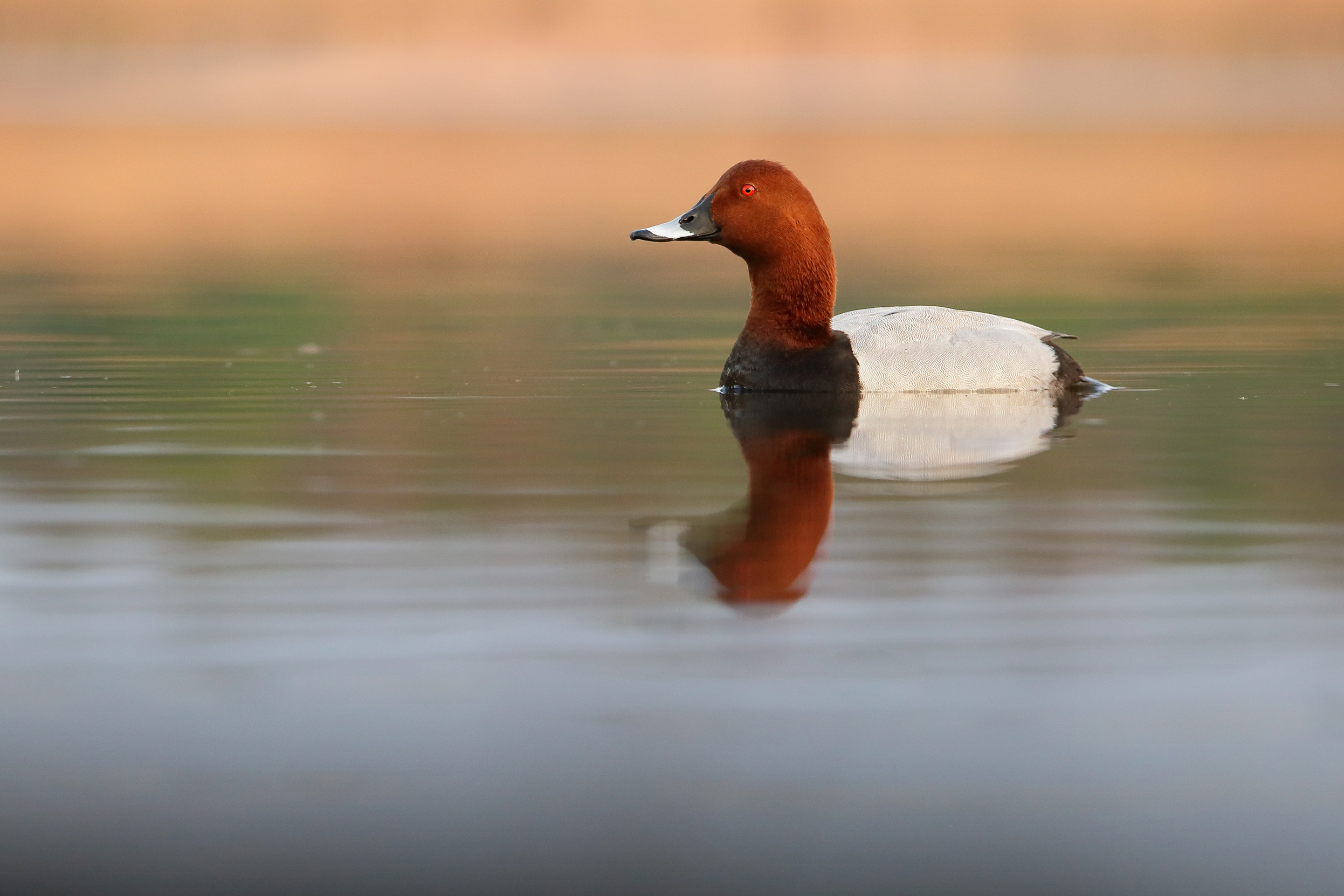Birds and wildlife
Pochard
Aythya ferinaGroup: Ducks, geese and swansUK Conservation status:RedHow to identify
In winter and spring, male Pochards are very distinctive. They have a bright reddish-brown head, a black breast and tail and a pale grey body. Females are more easily confused with other species – they are brown with a greyish body and pale cheeks. But, during the 'eclipse' – when ducks grow new feathers – the males look very similar to the females. They become more camouflaged so that they don't draw the attention of predators.Call

Pochard
Herman van Oosten / xeno-canto
Key
- Resident
- Passage
- Summer
- Winter

- Jan
- Feb
- Mar
- Apr
- May
- Jun
- Jul
- Aug
- Sep
- Oct
- Nov
- Dec